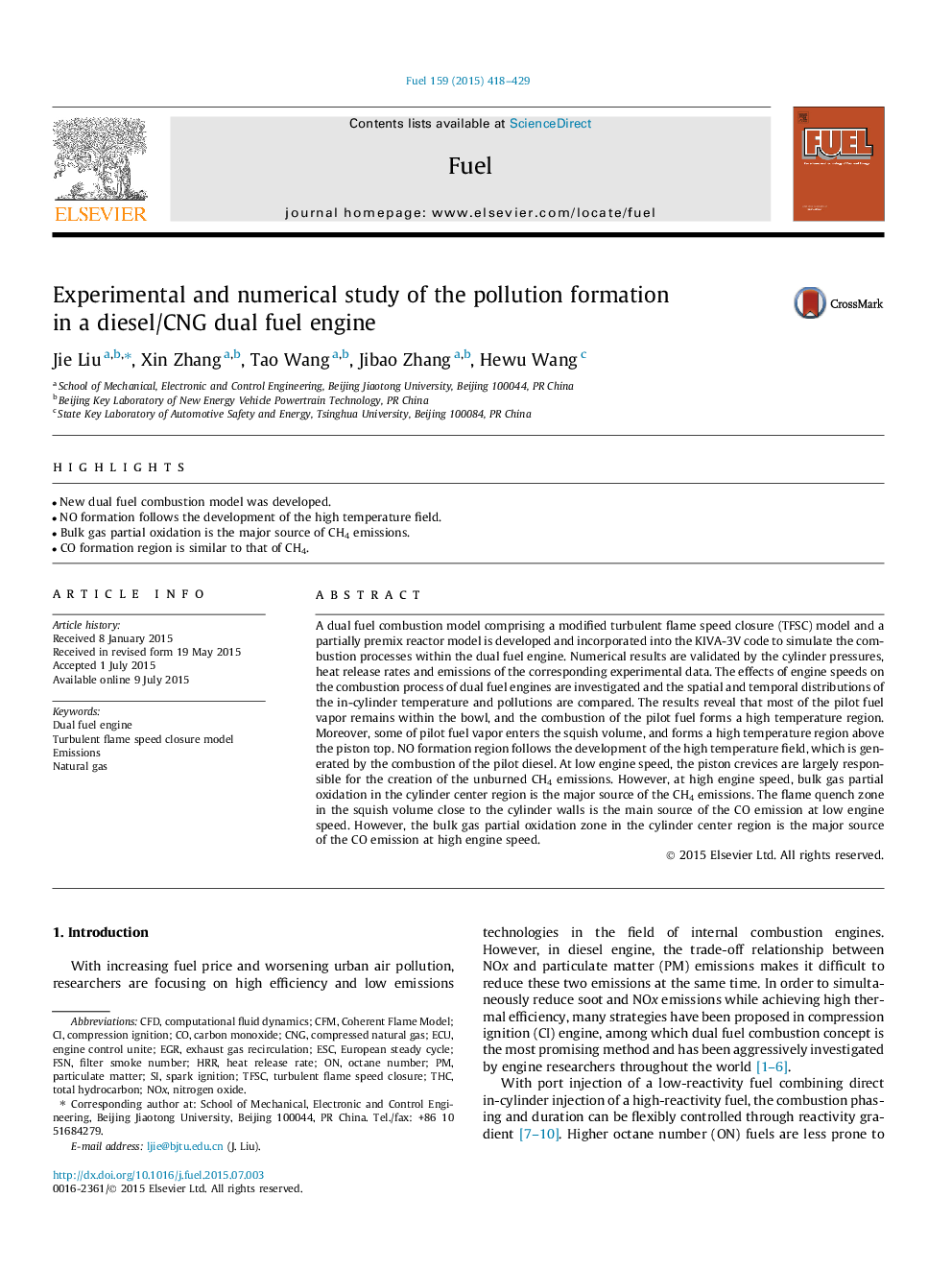| Article ID | Journal | Published Year | Pages | File Type |
|---|---|---|---|---|
| 6634653 | Fuel | 2015 | 12 Pages |
Abstract
A dual fuel combustion model comprising a modified turbulent flame speed closure (TFSC) model and a partially premix reactor model is developed and incorporated into the KIVA-3V code to simulate the combustion processes within the dual fuel engine. Numerical results are validated by the cylinder pressures, heat release rates and emissions of the corresponding experimental data. The effects of engine speeds on the combustion process of dual fuel engines are investigated and the spatial and temporal distributions of the in-cylinder temperature and pollutions are compared. The results reveal that most of the pilot fuel vapor remains within the bowl, and the combustion of the pilot fuel forms a high temperature region. Moreover, some of pilot fuel vapor enters the squish volume, and forms a high temperature region above the piston top. NO formation region follows the development of the high temperature field, which is generated by the combustion of the pilot diesel. At low engine speed, the piston crevices are largely responsible for the creation of the unburned CH4 emissions. However, at high engine speed, bulk gas partial oxidation in the cylinder center region is the major source of the CH4 emissions. The flame quench zone in the squish volume close to the cylinder walls is the main source of the CO emission at low engine speed. However, the bulk gas partial oxidation zone in the cylinder center region is the major source of the CO emission at high engine speed.
Keywords
EGRECUTHCHRRFSNCFMCNGTFSCCoherent Flame ModelNOxcompression ignitionEmissionsnitrogen oxideOctane numberspark ignitionESCCFDComputational fluid dynamicsparticulate matterFilter Smoke Numbercarbon monoxideDual fuel engineHeat release ratetotal hydrocarbonNatural gascompressed natural gasexhaust gas recirculation
Related Topics
Physical Sciences and Engineering
Chemical Engineering
Chemical Engineering (General)
Authors
Jie Liu, Xin Zhang, Tao Wang, Jibao Zhang, Hewu Wang,
